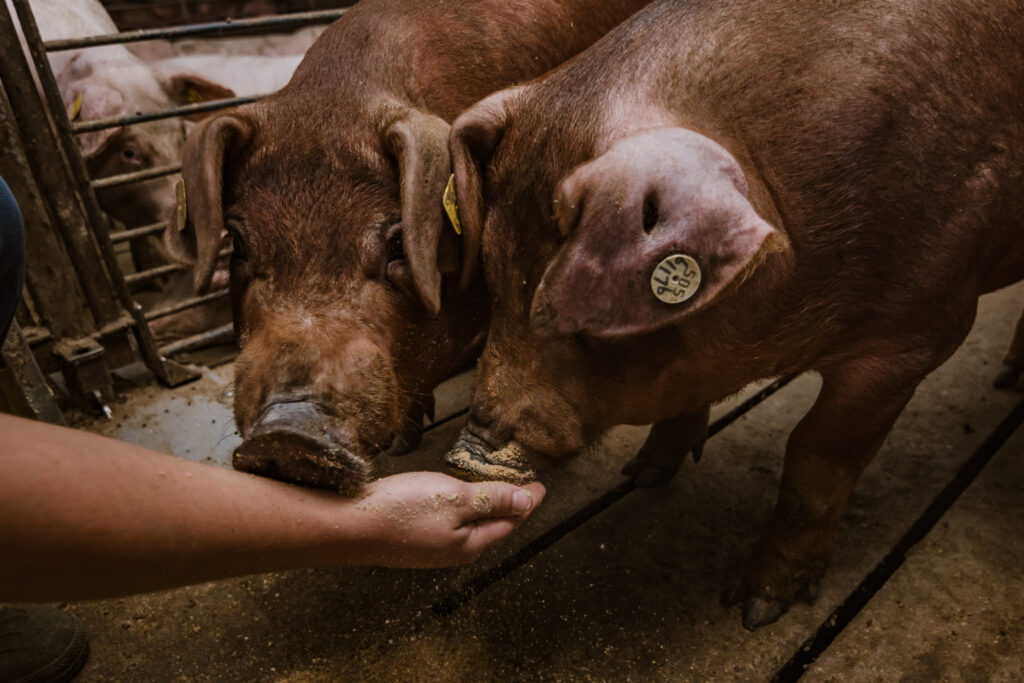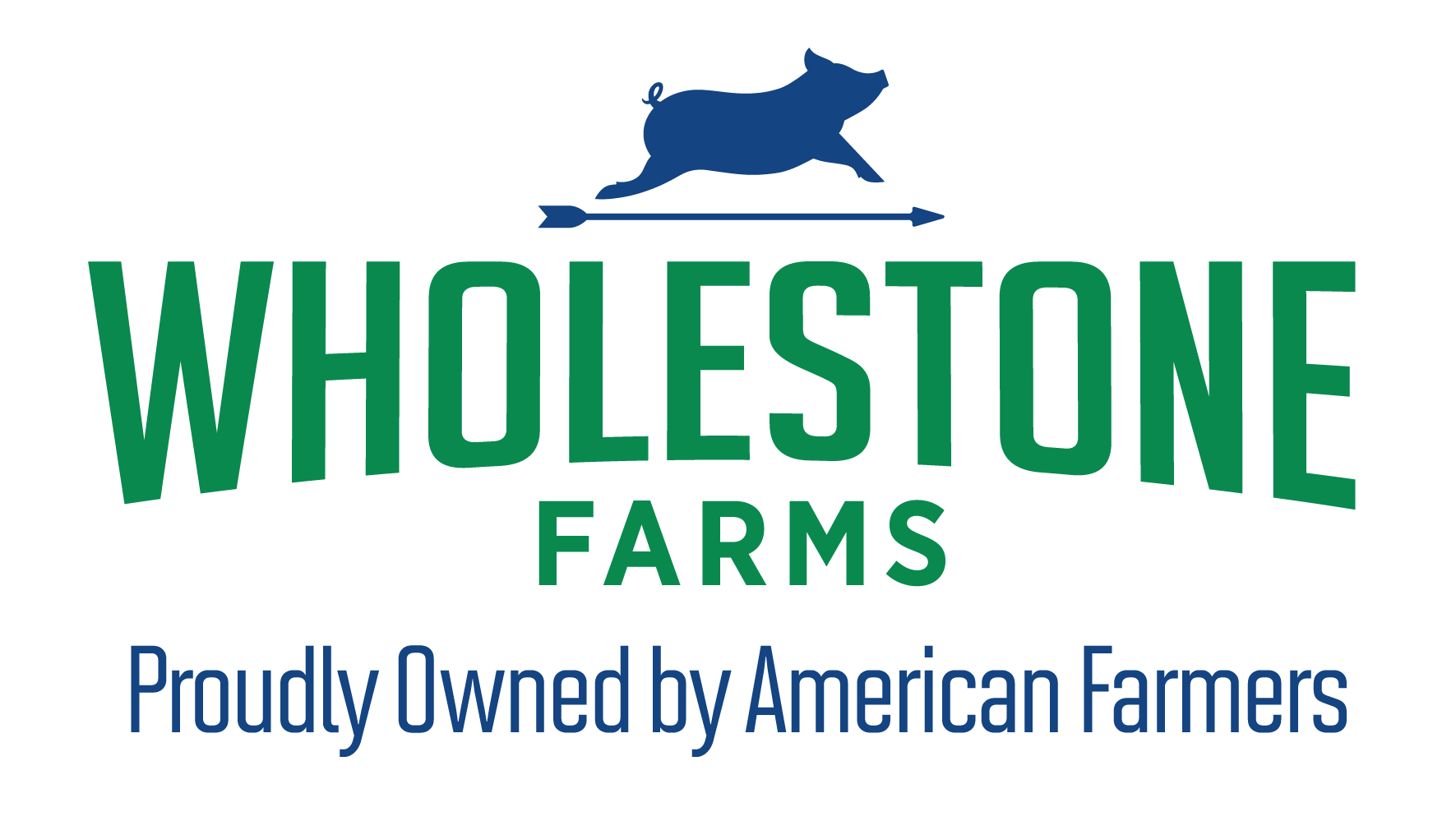Animal welfare
The Right Thing to Do for Our Animals

Animal welfare is an unwavering value at our owners’ farms and our harvest facility. Handling our animals with the utmost care is a responsibility we are committed to simply because it is the right thing to do for the animals.
Proper animal handling is an essential factor that affects every aspect of the animal’s life cycle, including meat quality. Science shows there is a crossroads between animal handling and meat quality. Negative human-animal interactions can contribute to stress. Most science supports that 70% of what impacts meat quality are environmental factors, which includes stress. Acute stress immediately prior to harvest can be the most influential. Data also supports that stressful experiences even before the pigs arrive at the plant can impact meat quality. Developing positive human-animal connections starts at birth, builds at the farm during the growing phase, and continues through the harvest facilities’ handling process.
An ideal journey for a pig from farm to harvest looks something like this:
Starting at birth and throughout the growing phase producers frequently interact with their animals to have the pigs become accustomed to positive human interactions. Hogs ideally are pre-sorted at the farm to allow rest time prior to being loaded for transport to the plant. Once it is time for marketing, experienced trained individuals calmly load the pigs on the trailer. Duration of transportation is best if it is more than an hour drive so animals can get situated and rest. Once the animals arrive at the plant, experienced and trained individuals calmly unload the animals. Ideally the animals are allowed to rest for 2-5 hours prior to being harvested. Animal handling within the last hour prior to harvest is critical to minimize stress.
If you think giving proper animal handling to the animals is like giving them a little love, you might be asking “What’s love got to do with it?”!
Interestingly, the journey from muscle to meat is an intricate scientific phenomenon.
If animals are not stressed at the time of harvest, lactic acid builds up in their muscle cells and lowers pH which slows mitochondria activity. Mitochondria are like the power plant of the muscle. This decreased mitochondrial activity leaves a surplus of oxygen to bind with the myoglobin in muscle cells. Oxygenated muscle cells and proper pH levels result in ideal meat quality… in other words meat quality is great with a desirable appearance.
On the contrary, significantly stressed animals exert more lactic acid prior to harvest so there is less lactic acid remaining in the muscle cells and pH begins to rise. Mitochondria do not slow down which results in oxygen being used up and the myoglobin in the muscle cells remaining unbound to oxygen. Meat quality declines and appearance of meat is inferior in this scenario.
But wait! There is still more to marvel at — cooking a pork chop is an art but there is also science behind the process!
Did you know that emulsions of fat & water are stabilized by proteins (like myosin) which are more stable as you cook your meat. So, if you are preparing a well marbled cut of meat, it will have more moisture than a lean cut resulting in a tender, delicious experience. There is also pyrolysis and the Maillard reaction (a heat-driven chemical reaction between sugars and amino acids that leads to browning of the meat and enhanced flavor), which contribute to a more complex taste in your perfectly grilled pork chop. See our recipes.
Meat quality is driven through multiple facets throughout the life span of the animal. Welfare of the animal is a nonnegotiable practice that provides a stable and healthy environment for the animal, while also influencing meat quality. Wholestone Farms is dedicated to continuously improving our animal handling practices on-farm and at the plant.

